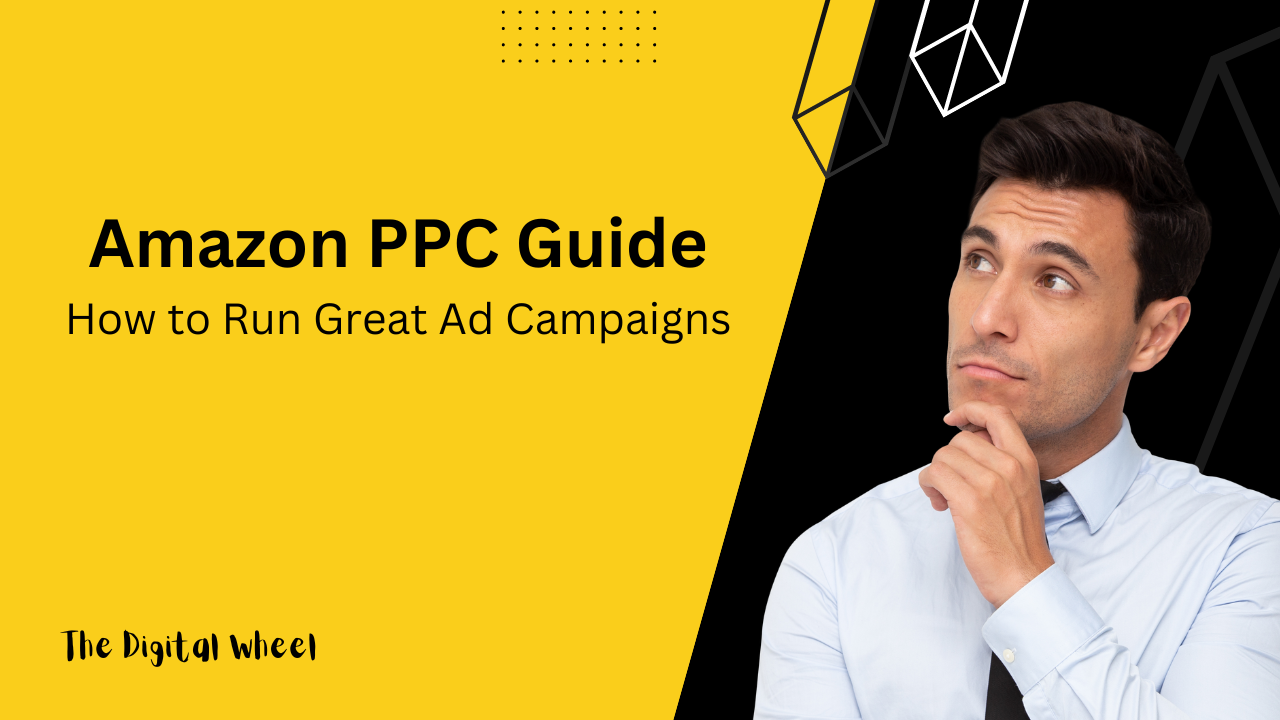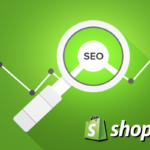From over 9.7 million Amazon Sellers worldwide, only 200,000 sellers make over $100,000 in sales in the US. The right time to learn about Amazon PPC optimization? We bet it is!
What is Amazon PPC Optimization (pay-per-click)?
Amazon pay-per-click, or PPC, is an advertising, auction-based platform where advertisers meet and place their bids for keywords.
Whenever a potential customer searches for a particular product/service, the sellers with the highest bid on the best keywords win the auction. And you’ll see their brand/products listed in the Sponsored Products section in the search results.

Pay-per-click, as the name suggests, indicates that the advertisers will only pay the bid price if their ads get clicked and not every time it appears in the search results.
Since this is an auction playground, you’ll have to pay only 1 cent more than your competitors to win the ad placement area for your product.
For example, if you bid $2 for any particular keyword while your competitor bids at $1.5, Amazon will charge you $1.51 for the ad placement.
An overview of Amazon ad revenue
In 2012, Amazon launched various self-service ad solutions to attract potential buyers who browse the web for online purchasing. It became the perfect platform for vendors and sellers to come and shelf their products on display for customers.
Arguably, being the market leader in the online retail industry, its visitors showcase the highest probability of purchasing from the platform.
In its 2017 press release, the company revealed it made over a billion dollars in sales in the holiday season alone. Moreover, The International Academy for Production Engineering (CIRP) stated that Amazon’s Prime members spend an average of $1,300 per year in the US, while Amazon Echo users spend around $1,700.
Every average Amazon customer makes purchases worth $1,000 in the US. And the retail giant is only second to Google regarding keyword rankings and product searches.
Seemingly, a lucrative opportunity for Amazon PPC optimization.
Is Amazon advertising worthy enough?
Yes, the advertising channel is worth it for your business and one of the best ways to direct traffic to your product pages.
This is often asked in PPC-based discussions about why businesses should invest in paid marketing. The paid traffic acquired is mostly relevant prospects that can be potential customers and are currently in the research phase in the buyer’s journey.
Amazon is the core traffic hub; apparently, you would want to operate in a place where you can quickly suck in traffic rather than starting a new website and doing all the legwork from scratch.
It is the leading ecommerce site in US in terms of traffic. According to Statista, in May 2020, it was reported that Amazon registered over 2.5 billion users.
How does the Amazon paid search work?
Before diving into the Amazon pay-per-click strategy, let’s go through a quick breakdown of how its paid search works.
With over 159 million keywords in the Amazon search volume data, understandably, the ecommerce marketplace stocks millions of searches a month.
The searches range from short to long-tail keywords, and the searchers are people who are browsing to make their respective purchases. If you’re a potential shopper going through Amazon right now, you’re not messing around doing window shopping.
For example, if you type in the query “gym workout shorts for men,” here are the ‘organic’ search results.

On the other hand, here we have the sponsored posts, or ‘paid’ search results which can appear above, below, or in the middle of organic results.

Earlier in the article, we discussed how paid ads are run to occur on the page. It is important to note that the pay-per-click model has been a hit among various retail giants. According to Business Insider, in 2017, Amazon’s paid search revenue was $2.8 billion, and the impact has only increased with time.
Three major ad types
Amazon’s PPC ads can be categorized into three major types. Each ad type serves a different purpose and forms a unique perception in the users’ minds.
Sponsored Product Ads
Businesses use specific targeted keywords for advertising in their sponsored product ads. And sponsored product ads operate similarly to ads that run on Google Shopping Network.

When we talk about excellent CTRs and conversions, sponsored product ads always fare well as they blend in with organic search results and gain equal exposure.
Regardless of their position and placement on the product page with the organic results, they are only beneficial if you’ve done the thorough keyword research.
Setting up your ad is simple. Just select your product, add the keyword, and allot a budget. In doing so, Amazon will automatically target your ad to the relevant audience.
It is often claimed that Amazon’s Sponsored Product Ads often perform better than Google’s AdWords. Furthermore, they’re also cheaper than Google’s CPCs.
Product Display Ads
As the name suggests, product display ads are put on a product page in the “similar product” section. These ads are paired with the ASINs, and their self-service option gives users good choices to work on the behavioral chunks.

It is important to note that each ad type has its own placement, budget allocation, conversion rate, and CTR potential. And Amazon encourages sellers to match each deal with the desired audience for a Display Ad.
As a seller, you’ll target the product’s detail page, associated categories and interests, and related listings.
Headline Search Ads
Like sponsored product ads, headline search ads are also limited to specific product categories. These ads are displayed at the top with the brand logo, also called banner ads.
The primary purpose of placing at the top is to get them maximum exposure. In doing so, you can market three or more products simultaneously and customize the ad copy and even the landing areas.
Brands using headline search ads benefit from a wide array of customization for brand pages, product pages, search results pages, and even a URL.

Four considerations for running a PPC ad
To run effective PPC ad campaigns, you must follow these requirements.
Seller Account
Every advertiser is required to have a seller account in an inactive state.
Shipping
The advertiser should be eligible to ship the products to any location in the US.
Buy Box
If you’re opting to use Sponsored Products for advertisement, you must comply with the Buy Box eligibility criteria. The criteria involve discussing additional requirements like holding a professional seller account and stock availability and showing metrics like order defect rates, cancellation rates, late shipment rates, and so on.
Amazon Brand Registry
Your enrollment must be ensured in the Amazon Brand Registry if you want to use headline search ads. The purpose is to safeguard intellectual properties and facilitate a quality user experience.
How are PPC placements affected?
If a specific search term enlists more than one relevant product, you’ll obviously be competing for the ad placement. Here are the two factors that decide ad placement.
Amazon PPC
You’ll probably win if you’re willing to pay a higher CPC than other advertisers for the same product and keyword.
Quality factor
The quality of any Amazon ad is gauged by its potential to get clicked by a buyer. The ad’s click history is also a deciding factor.
In other words, the higher the bid placed, the higher your chances to win the ad amongst other advertisers for the same product. While the better the ad quality, the lesser you’ll be required to bid to grab the top placement spot.
Why do you need to try Amazon PPC optimization?
Although you may have a top-performing product gobbling in great sales numbers from organic marketing, still, there are several reasons why you should do Amazon PPC optimization for your campaigns.
Boost your product sales
Running PPC ads is one of the easiest, most common approaches to increasing revenues. Also because, increasing sales is the ultimate, long-term objective of sellers.
Increase the organic rankings of competitive keywords
There are plenty of highly competitive keywords in almost every niche that is quite difficult to rank through organic efforts. But using PPC advertising on such keywords can make the task easier and enhance your visibility.
Besides sales, PPC ads can also complement organic marketing efforts and lift rankings of such competitive keywords.
Create brand awareness for new product launches
Products that score the most sales automatically enjoy the top spots in the search results. On the other hand, new products struggle to rank for their keywords, and a low rank will lead to fewer sales.
In qualitative terms, PPC ads also increase brand awareness and on-the-shelf exposure for your new products.
Avoid competitors stealing top spots and sales
Seemingly, the most lucrative, highly dynamic niches are the first to get filled with sellers.
There’s a downside to organic marketing when competing with PPC ads. You might have one or more of your products doing well in high rankings through organic search, but they can be easily toppled by sellers doing PPC advertising for the same products and keywords.
This is why many top brands also do PPC advertising to keep their high positions and rankings intact. Hence, it diminishes the chances of other PPC advertisers snatching their first page spots, sales, and customers.
Make the most out of seasonal trends
Is your target audience residing in summer-torched regions in the US? How about targeting the “men’s summer fashion” keyword for your next PPC campaign?
Yes, I am talking about getting the most out of seasonal trends. For instance, Christmas, New Year, and Halloween for holidays, or a more prolonged period and occasions such as summers, winters, NFL seasonal accessories, and merchandise, to name a few.
Depending on your product, you can run PPC campaigns and extract the best sales based on seasonal consumer behavior.
How to optimize your Amazon ads?
With millions of products getting bought and sold every minute on Amazon, you might wonder if you have a chance to acquire an ROI on your products.
Fortunately, the following tips can help you stand apart from the competition in the Amazon marketplace. To do that, you need to optimize your Amazon ad strategy.
Create well-structured campaigns by product category
If you already have an experience with AdWords advertising, you must be familiar with Amazon advertising too.
You can also use your AdWords management skills for Amazon’s campaigns and ad groups. The best trick is creating an individual campaign for each main product category. And under each campaign, create more specific ad groups.
Suppose you sell men’s athletic wear, and you opt to initiate with three of your best-selling products—men’s workout shorts, men’s workout shirts, and men’s workout shoes.
Now under these three campaigns, you can create more specific ad groups. For example, in the 1st campaign, the ad groups could be—men’s workout tights, men’s yoga pants, and men’s sports boxers.
Now create a list of relevant keywords for each ad group. Ideally, keeping between 15 to 30 keywords for each group is suggested. Eventually, you’ll start creating ads under each keyword grouping.
The entire point is to create a systematic, solid account structure. In doing so, you’re making relevant ads, saving money and time, and enhancing your potential ROI.
Write action-driven, relevant ad copy
Although making your ad copy relevant from a selling standpoint is essential, try to add some creativity and humor, if possible. Also, walk that extra mile to stand out in an already congested marketplace on Amazon.
As bluntly as I can say, try to incorporate a sense of urgency in your content for any Amazon pay-per-click campaign. For example, if you’re running a sale on some of your products, make sure to add them in a creative fashion.

See the ad copy is what the user wants
Keeping your content specific is one of the essentials for Amazon PPC optimization. “What” you’re selling, is the key.
For example, if you’re selling men’s t-shirts, the user wants to know what type of fit, wash, size, color, etc., your product has. In short, anything that’s relevant to make your ad short and specific yet convincing.
Understandably, it is difficult to stuff all the information in the copy, only put the most critical chunks. Consider the following example:

Looking at this ad copy of waist jeans, we can see all the essential information included, like size, color, fit, wash, and stuff.
Bid on top brands that sell similar products
Keep your direct competitors in mind when doing the keyword research activity. For instance, if you’re selling men’s shorts, you should be bidding for terms like “Dockers men’s perfect shorts,” “Wrangler men’s cargo shorts,” and related terms because they’re commonly searched.
This will allow you to enter the mainstream competition and target an audience to buy your cheaper yet cooler men’s shorts.
To perform keyword research on Amazon, go to the search bar and write in the generic name of your products, i.e., men’s shorts. The brands coming in the search results can be taken as competitors.
Experiment with all three ad formats
Although the ad formats have their unique set of benefits (worthy of a separate discussion), Amazon PPC optimization doesn’t restrict you and you need to experiment with all three formats.
The idea is to see which ad format yields the best ROI on your Amazon pay-per-click campaigns. Once you have the numbers from all three formats, decide which format is most suitable for your brand, products, campaign, and budget.
Use negative keywords
Like Google ads, using negative keywords is a precautionary approach to reduce wasted expenses from irrelevant clicks.
Consider you’re selling musical flutes and bidding on the term “flutes” with phrase or broad match. Any random user could search for “champagne flute,” and your ad could still appear.
If the user accidentally clicks on the ad, you’ll incur an amount from someone looking for a mere $10 to $15 glass instead of a premium musical instrument.
In such cases, staying more conservative with your match types is recommended, and not broad matches. Try to put more focus on exact or phrase match.
Related content: How to Plan, Implement, and Optimize your PPC Campaigns for a Successful ROI
Final thoughts!
This concludes our guide for Amazon pay-per-click advertising for newcomers and regular users who wish to run their subsequent paid advertising campaigns on Amazon.
Have a quick overview of how Amazon PPC optimization works, how the revenue model performs, is Amazon advertising worthy enough, the dynamics of Amazon paid search, three major ad types, how to run a PPC ad, how PPC placements are influenced, reasons for using Amazon PPC strategies, and optimizing your Amazon ads.
In the upcoming pieces, we’ll study each subtopic in depth on how brands can win through Amazon pay-per-click advertising.



